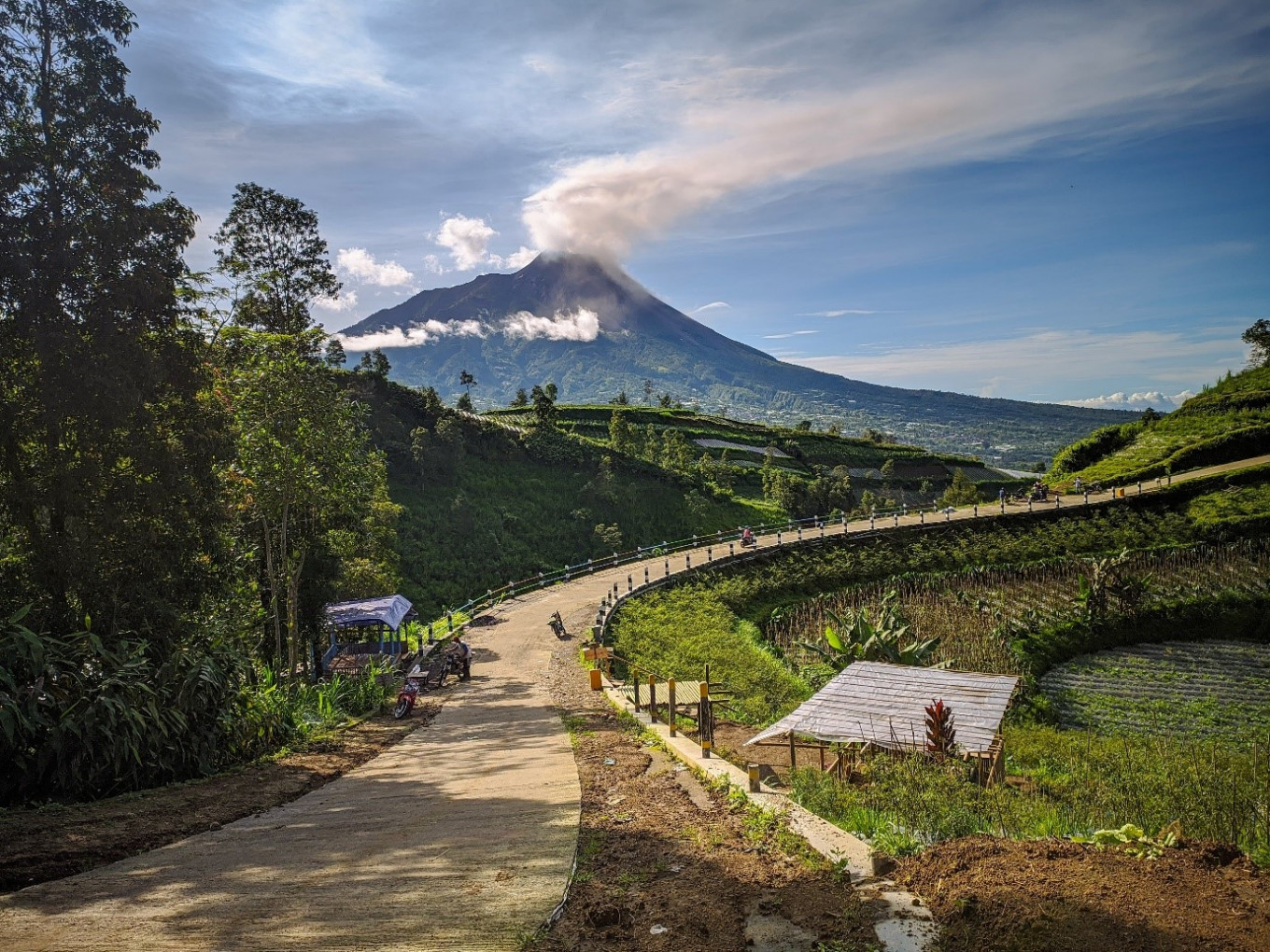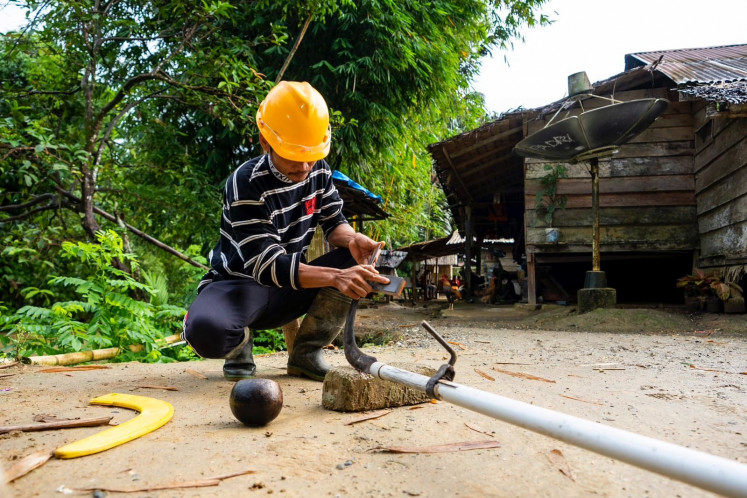Popular Reads
Top Results
Can't find what you're looking for?
View all search resultsPopular Reads
Top Results
Can't find what you're looking for?
View all search resultsVillage funds; a form of state appreciation for villages
Change text size
Gift Premium Articles
to Anyone
“Indonesia will not shine with big torches in Jakarta, but Indonesia will shine with candles in the villages" - Mohammad Hatta.
The statement from the First Vice President of the Republic of Indonesia, Mohammad Hatta, portrays the important role villages have in terms of national development. Not because the majority of Indonesian people live in villages, but villages make a big contribution to creating national stability. Villages have natural resources that can be used for development, such as land, water and agricultural land. Utilization of these resources can improve the village economy and village communities, which in turn can realize national ideals as stated in the fifth Principle of Pancasila: "Social Justice for All Indonesian People."
Village development is a part of a series of national development. National development is a part of a series of sustainable development efforts that cover all aspects of community life. Therefore, the government realizes how vital the development is at the village level, through Village Funds, as mandated by Law Number 6 of 2014 concerning Villages.
The aim of the Village Fund is to improve welfare and equitable village development through improving public services in villages, advancing the village economy, overcoming development gaps between villages, and strengthening village communities as subjects of development. Village Funds sourced from the State Revenue and Expenditure Budget (APBN) are a form of state recognition or appreciation for villages.
Based on the Law on Financial Relations between the Central Government and Regional Governments (UU HKPD), Village Funds are part of Transfers to Regions (TKD), which are intended for villages to support funding for government administration, development implementation, community empowerment and society. Village funds are allocated taking into account equity and justice which is calculated based on village performance, number of villages, population, poverty rate, area and level of geographic difficulty. Utilization of Village Funds to accelerate development and empowerment of village communities must have clear and measurable outputs and outcomes through setting targets for the use of Village Funds each year in accordance with national priorities set out in the law on the APBN.
Village Funds were first allocated in 2015 amounting to Rp 20,766.2 billion and then continued to increase until reaching Rp 70,000 billion in 2023. The development of Village Funds for the 2019-2023 period experienced an average growth of 0.04 percent, from Rp 69,814.1 billion in 2019, to Rp 69,930.0 billion in the 2023 outlook.
On the other hand, the average Village Fund received per village also increased from Rp 931.4 million per village in 2019 to Rp 933.9 million per village in 2023. Furthermore, the number of villages receiving Village Funds also increased, namely from 74,953 villages in 2019 to 74,954 villages in 2023.
The 2024 APBN budgets for Village Funds of Rp 71,000 billion, higher by Rp 1,070 billion or 1.5 percent compared to the 2023 outlook.
Director General of Financial Balance at the Ministry of Finance Luky Alfirman said that currently the central government will allocate Village Funds for Fiscal Year (FY) 2024 to 75,259 villages.
The 2024 Village Fund budget is directed at accelerating the elimination of extreme poverty in Indonesia as stated in Presidential Instruction Number 4 of 2022. The three main strategies for alleviating extreme poverty are:
. (Courtesy of Finance Ministry/.)Firstly, reducing the burden on public expenditure, through social assistance programs, Social Security, subsidies, price stability policies, and other programs that can reduce the burden on public expenditure. Secondly, increasing community income through increasing productivity and community empowerment by optimizing the Village Cash Work Intensive Program (PKTD), and thirdly, reducing the number of pockets of poverty, including through providing basic services, such as increasing access to educational services and infrastructure, health services and infrastructure, as well as adequate drinking water sanitation infrastructure.
"Currently the country's main priority is overcoming extreme poverty, so we tell these villages that you must also allocate funds to overcome extreme poverty in your village," said Luky Alfirman.
The policy on using Village Funds is also directed at accelerating the reduction of stunting in villages. through promotive and preventive actions to prevent and reduce stunting are in accordance with village authority and decided at village meetings, and the stunting budget from the Village Fund in 2024 is estimated at Rp 10,470.8 billion.
Village Fund support in 2024 is also directed at food security. On a village scale, it takes the form of food and animal security programs through the agriculture, plantation, livestock, and capture and aquaculture sectors. Food security is intended in addition to ending hunger, achieving food strengthening, improving nutrition and promoting sustainable agriculture as well as increasing the exchange rate index for farmers and fishermen. The food security budget originating from the Village Fund in 2024 is estimated at Rp 9,017.9 billion.
This Village Fund Program is in line with the TKD policy implemented by the Government, where the allocation continues to increase, as a manifestation of fiscal decentralization. In the last 10 years, it has been able to encourage improvements in regional and village performance. This can be seen, among other things, from the strengthening of regional fiscal independence and the continued increase in the number of villages with independent village status.
Data from the Developing Village Index (IDM) of the Ministry of Villages and Empowerment of Disadvantaged Regions shows that in 2018, only 313 villages were categorized as independent villages. This number increased significantly, to 11,456 villages. Even though Village Funds are not the only source of funding for activities in villages, this shows that good village fund management is coupled with the focus of local governments which are encouraged to pay more attention to villages through Village Fund Allocations from district/city governments, Financial Assistance Expenditures. from both provinces and districts/cities, Profit Sharing Funds sourced from Regional Taxes and Regional Levies, as well as spending from the APBN/APBD other than mandatory ones, are able to contribute to continuing to encourage village performance.
Source: The Finance Ministry












